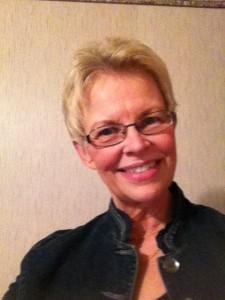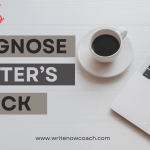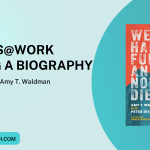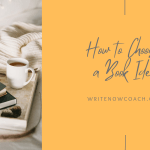Dig into Picture Book Writing
Happy May Day! And congratulations to the winners of the latest Write Now! Coach contest. Valorie Grace Hallinan won a signed copy of Wild by Cheryl Strayed and Todd from Hell’s Kitchen won Fearless Confessions by Sue William Silverman. Congrats!
Today begins the week-long celebration of National Picture Book Writing Week, when participants write 7 picture books in seven days. Author and musician Paula Yoo launched Picture Book Writing Week four years ago. Visit her site tips and tools: NaPiBoWriWee 2012: Rules & Info for May 1-7, 2012 Event!
If you’re an aspiring picture book author, today’s amazing tip by guest writer Sandy Brehl will introduce you to the wonderful world of writing for children. Enjoy!
 Dig into Picture Book Writing by Sandy Brehl
Dig into Picture Book Writing by Sandy Brehl
The landscape of publishing in general and picture book publishing in particular is changing rapidly. If you’re only interested in creating and illustrating simple books to share with family, this won’t matter to you. But if you are intent on publication for a wider audience, you need to take a professional approach to learning about this evolving market.
If I had a 25-word limit for this post, I would have simply said:
Join the Society of Children’s Book Writers and Illustrators, SCBWI, NOW! Explore their site, join your regional group, attend conferences, and find a critique group. (25 words!)
Here’s why: I’ve been writing for decades, studying, taking classes, even conversing with successful writers and illustrators. I’ve also been sharing picture books with kids of all ages. I joined SCBWI three years ago. In these three years I learned exponentially more than in all the years before. Until three years ago I didn’t know you could join SCBWI, participate, and learn without having a book published- yet. You can. Do it, please.
If my limit allowed another 25 words they would be:
Read, read, and reread as many picture books as you can. Especially recent releases.
Write, revise, seek critiques, revise again.
Follow respected and professional blogs. (25 words!)
Here’s why:
READ: Picture books are changing drastically, especially in word length. The standard a few years ago was 1200-1500 words. Now guides say 600 words or less. Topics, trends, and targets are changing. You need to be aware of the current market.
WRITE: Picture book writing is truly unique. Compare your writing to similar books on the market. Apply universal principles of writing, but notice and learn about picture book principles, too.
READ BLOGS: Several useful professional blogs are listed in the resources below. Find a few that offer consistent, current resources and stay informed. Follow guidelines for cover letters, submissions, and manuscript formats, First impressions count.
Here are some bits and pieces I’ll offer from my personal journey toward improvement:
Know what makes a picture book a picture book. The ALA’s official definition is lengthy, but the short version goes like this: A picture book is aimed at children, including teens, and has a collective unity of story-line, theme, or concept, developed through the series of pictures of which the book is comprised.
In a post relating to the ALA awards earlier this year I wrote: “Picture books have magnetism: complex visual media, powerful language, accessible and informative text. Quality picture books offer readers a rich terrain and an irresistible hook to read deeply, to reread, to connect, and to appreciate. Picture books foster intense, satisfying engagement with books—the original hand-held app.”
Picture books are a dynamic and changing format. Picture books include board books, wordless books, interactive books, fiction, non-fiction, ebooks, and every genre. They can be 8 pages and range up to 96 pages and beyond (Patricia Polacco’s January’s Sparrow. Philomel, 2009; Kadir Nelson’s Heart and Soul: The Story of America and African Americans. Balzer + Bray, 2011). In 2007 Brian Selznick’s The Invention of Hugo Cabret (now the movie HUGO) won the Caldecott Award for best picture book of the year with 533 pages.
Typical picture books are 32 pages, a very limited space in which to create brilliance. Check Tara Lazar’s excellent description and tips, including a layout for storyboarding a 32 page PB. Subscribe to her blog—a treasury of good advice.
You don’t need to be an artist, know one, or hire one to illustrate your submission. In fact, to do so will likely diminish your chances of being accepted, or even taken seriously. If you are a writer, write. Limit your notes about the illustrations to a minimum, and then only in the cover letter, not on the submission text. Trust the editor to select the best illustrator and guarantee that the final result will be greater than the sum of the parts.
I’ve used my theoretical fifty words, and many hundreds more. I’ve tried to offer examples of some of the best advice and resources available. Here’s hoping potential picture book writers find something helpful in all these words. Learning, stretching, exploring—it’s what picture books are all about. And picture book writers, too.
Additional Resources:
One author who took a long steady path to PB success is Verla Kay. Her website and live chat discussions are a great place to start.
Harold Underdown, highly respected editor in children’s publishing, manages the website The Purple Crayon. Here he provides reliable guides, directions, samples, and advice for PB writers at all stages, novice to professional.
A helpful summary is presented here: “What Publishers Want In A Children’s Book” April 13, 2012 post at Tina Nichols Coury’s Blog: Tales from the Rushmore Code.
About the author: Sandy Brehl is a teacher, a reader, a writer, an art lover, and a fair-weather gardener. In her words:
People ask, “What do you teach?” For forty years I’d answer the question truthfully: “I teach kids.” Not curriculum, not a grade level, not subject matter. Kids. Those kids ranged from tots to teens, gifted to challenged, and every kid in between.
In the last few years I answer – “I teach teachers.” And librarians, childcare workers, and parents. I conduct outreach workshops on using picture books to improve learning, with several topics and themes, including using picture books in content area and with established (older) readers.
I write, for kids and for adults, fiction and noin-fiction, you name it, I write it. I read- also adult and children’s, fiction and non-fiction, you name it, I read it.
In January of this year I launched my blog, Unpacking the Power of Picture Books http://UnpackingPictureBookPower.blogspot.com















OK, I really hope I win a copy of Ash Wednesday. To put my two cents worth in about publishing, I also had a bumpy road. Lots of rejections-the key is not to give up. Knowing that I was a first time author and not a famous name I figured my chances with the Big guys were null. So I targeted small publishers. I thank God for leading me to Inspired Romance Novels.com. A smaller e-publisher who now offers print options. That’s the home of my Inspirational Romantic Suspense ‘Escape to Big Fork Lake.’
Great to hear your story, Mary!
I second the SCBWI advice. That’s how I got my start, attending local NJ-SCBWI events, taking copious notes, and rewriting those notes for my blog–speaking of which, I appreciate the mention!
Glad you visited the blog, Tara! I’d love to have you write a guest blog post sometime! 🙂